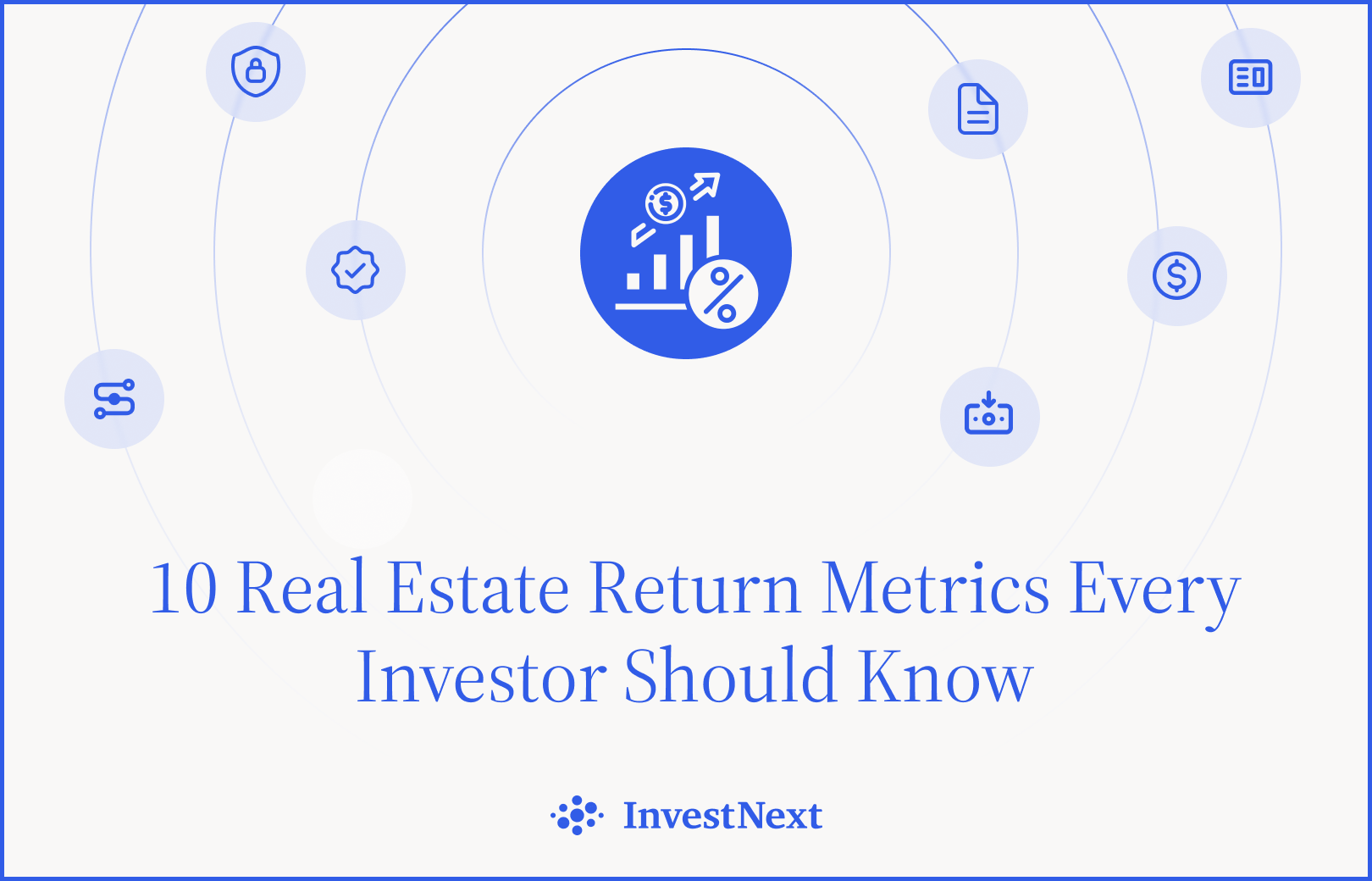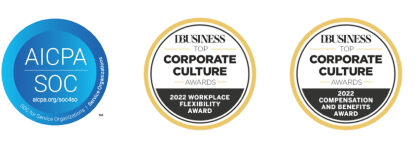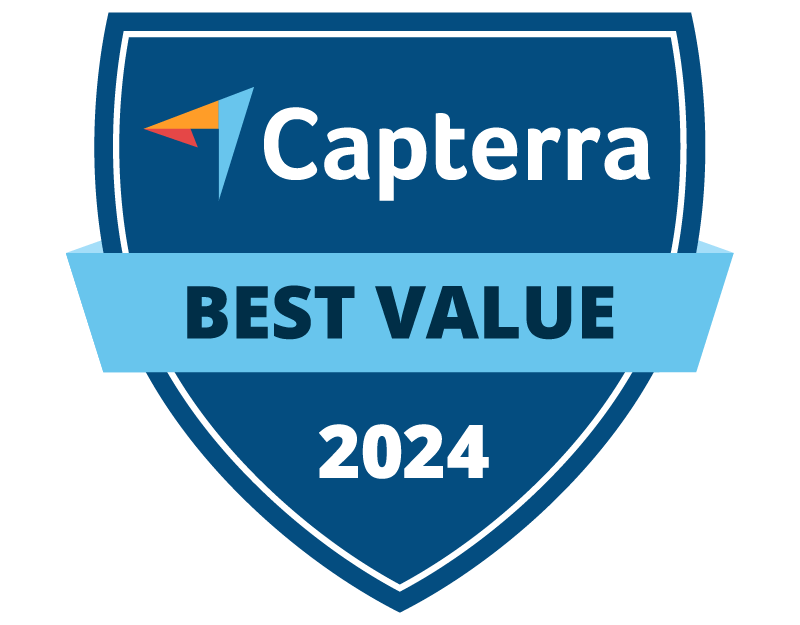Below is a list of terms that are used regularly in the Real Estate Investing Industry.
Capital Raise
The process a business goes through in order to raise money, so the business can get off the ground, expand, or transform in some way. In a Syndication, this is typically a raise
Investment Portfolio
An investment portfolio is a set of assets that can hold stocks, bonds, cash and more. Investors aim for a return by mixing these securities in a way that reflects their risk tolerance and financial goals. There are many different types of investment portfolios, as some are built into real estate investments, 401(k)s, IRAs and annuities, while others exist on their own through a brokerage or financial advisor firm.
Waterfall Hurdle
A distribution waterfall describes the method by which capital is distributed to a fund’s various investors as underlying investments are sold for gains. Essentially, the total capital gains earned are distributed according to a cascading structure made up of sequential tiers, hence the reference to a waterfall.
Distribution
A distribution generally refers to the disbursement of assets from a fund, account, or individual security to an investor.
Real Estate Investment Trust (REIT)
A real estate investment trust (REIT) is a company that owns, operates, or finances income-generating real estate. Modeled after mutual funds, REITs pool the capital of numerous investors. This makes it possible for individual investors to earn dividends from real estate investments—without having to buy, manage, or finance any properties themselves.
Co-Sponsor
A Co-Sponsor is also known as a “co-gp” or an additional general partner for any real estate syndication deal.
Preferred Return
A preferred return is a profit distribution preference whereby profits, either from operations, sale, or refinance, are distributed to one class of equity before another until a certain rate of return on the initial investment is reached
Return of Capital
Return of capital occurs when an investor receives a portion of their original investment that is not considered income or capital gains from the investment. Note that a return of capital reduces an investor’s adjusted cost basis. Once the stock’s adjusted cost basis has been reduced to zero, any subsequent return will be taxable as a capital gain.
Pro Rata
Pro rata real estate investment rights empower investors with the choice (sans obligation) to partake in subsequent funding rounds, preserving their ownership percentage in the property. Such rights guard against dilution amid new real estate investments.
Cash on Cash Return
A cash-on-cash return is a rate of return often used in real estate transactions that calculates the cash income earned on the cash invested in a property.
Cumulative Return
The cumulative return is the total change in the investment price over a set time—an aggregate return, not an annualized one. Reinvesting the dividends or capital gains of an investment impacts its cumulative return.
Total Return
Total return is the actual rate of return of an investment or a pool of investments over a period. Total return includes interest, capital gains, dividends, and realized distributions. Total return is expressed as a percentage of the amount invested.
Management Fee
A fee paid out of fund assets to the fund’s investment adviser for investment portfolio management. A fund’s management fees appear under Annual Fund Operating Expenses in the fee table in the fund’s prospectus.
Catch-up
The catch-up is a method for allowing a real estate private equity fund’s Manager’s share of net cash flows to defer to those of the Investors until a predetermined investment performance milestone is achieved by the Limited Partners (the Investors), after which point the profit cash flows to the Manager are “caught-up” by taking a pre-negotiated portion of cash flows that contribute towards the Manager to achieve up to but no more than this pre-negotiated share.
Absorption Rate
The rate at which available rentable units are leased in a specific real estate market during a given time period.
Accredited Investor
A person can invest in apartment syndications by satisfying one of the income or net worth requirements. The current requirements to qualify are an annual income of $200,000, or $300,000 for joint income, for the last two years with the expectation of earning the same or higher, or a net worth exceeding $1 million either individually or jointly with a spouse.
Acquisition Fee
The real estate buying partnership pays an upfront fee to the general partner for locating, assessing, financing, and finalizing the investment.
Active Investing
The finding, qualifying and closing on an apartment building using one’s own capital and overseeing the business plan through its successful execution.
Amortization
The paying off of a mortgage loan over time by making fixed payments of principal and interest.
Syndication
A commercial real estate syndication is a temporary alliance of professional financial services, aimed at facilitating a large apartment transaction that would be challenging or unfeasible for individual entities. It enables companies to combine resources, distribute risks and returns. Specifically for apartments, a syndication usually involves a partnership between general partners (the syndicator) and limited partners (the passive investors) for the acquisition, management, and sale of an apartment community, with shared profit participation.
Appraisal
A report created by a certified appraiser that specifies the market value of a property. The value is based on cost, sales comparable and income approach.
Appreciation
An increase in the value of an asset over time. The two main types of appreciation that are relevant to apartment syndications are natural appreciation and forced appreciation. Natural appreciation occurs when the market cap rate naturally decreases over time, which isn’t always a given. Forced appreciation occurs when the net operating income is increased by either increasing the revenue or decreasing the expenses. Force appreciation typically occurs by adding value to the apartment through renovations and/or operational improvements.
Asset Management Fee
The “commercial real estate asset management fee” denotes the recurring annual payment made to the general partner for their role in overseeing property operations.
Bad Debt
The amount of uncollected money owed by a tenant after move-out.
Breakeven Occupancy
The occupancy rate required to cover all of the expenses of a property.
Bridge Loan
A mortgage loan used until a borrower secures permanent financing. Bridge loans are short-term (six months to three years with the option to purchase an additional six months to two years), generally having higher interest rates and are almost exclusively interest only. Also referred to as interim financing, gap financing or swing loans. The loan is ideal for repositioning an apartment community that doesn’t qualify for permanent financing.
Capital Expenditures (CapEx)
The funds used by a company to acquire, upgrade and maintain a property. Also referred to as CapEx. An expense is considered CapEx when it improves the useful life of a property and is capitalized – spreading the cost of the expenditure over the useful life of the asset. CapEx included both interior and exterior renovations.
Capitalization Rate (Cap Rate)
The rate of return based on the income that the property is expected to generate. Also referred to as the cap rate. The cap rate is calculated by dividing the net operating income by the current market value of a property.
Cash Flow
In commercial real estate, cash flow represents the remaining revenue after deducting all expenses. It is calculated by subtracting operating expenses and debt service from the collected revenue.
Cash-on-Cash Return
The rate of return based on the cash flow and the equity investment. Also referred to as CoC return. Coc return is calculated by dividing the cash flow by the initial equity investment.
Closing Costs
The expenses, over and above the purchase price of the property, that buyers and sellers normally incur to complete a real estate transaction. These costs include origination fees, application fees, recording fees, attorney fees, underwriting fees, due diligence fees and credit search fees.
Concessions
The credits given to offset rent, application fees, move-in fees and any other cost incurred by the tenant, which are generally given at move-in to entice tenants into signing a lease.
Cost Approach
A method of calculating a property’s value based on the cost to replace (or rebuild) the property from scratch. Also referred to as the replacement approach.
Debt Service
The annual mortgage amount paid to the lender, which includes principal and interest. Principal is the original sum lent to a borrower and the interest rate is the charge for the privilege of borrowing the principal amount.
Debt Service Coverage Ratio (DSCR)
The ratio that is a measure of the cash flow available to pay the debt obligation. Also referred to as the DSCR. The DSCR is calculated by dividing the net operating income by the total debt service. A DSCR of 1.0 means that there is enough net operating income to cover 100% of the debt service. Ideally, the DSCR is 1.25 or higher. A property with a DSCR too close to 1.0 is vulnerable, and a minor decline in revenue or minor increase in expenses would result in the inability to service the debt.
Depreciation
A decrease or loss in value due to wear, age or other cause.
Distressed Property
A non-stabilized apartment community, which means the economic occupancy rate is below 85% and likely much lower due to poor operations, tenant problems, outdated interiors, exteriors or amenities, mismanagement and/or deferred maintenance.
Distributions
The limited partner’s portion of the profits, which are sent on a monthly, quarterly or annual basis, at refinance and/or at sale.
Due Diligence
The process of confirming that a property is as represented by the seller and is not subject to environmental or other problems. For apartment syndications, the general partner will perform due diligence to confirm their underwriting assumptions and business plan.
Earnest Money
A payment by the buyers that is a portion of the purchase price to indicate to the seller their intention and ability to carry out sales contract.
Economic Occupancy Rate
The rate of paying tenants based on the total possible revenue and the actual revenue collected. The economic occupancy is calculated by dividing the actual revenue collected by the gross potential income.
Effective Gross Income (EGI)
The true positive cash flow. Also referred to as EGI. EGI is calculated by subtracting the revenue lost due to vacancy, loss-to-lease, concessions, employee units, model units, and bad debt from the gross potential income.
Employee Unit
An apartment unit rented to an employee at a discount or for free.
Equity Investment
The upfront costs for purchasing a property. For apartment syndications, these costs include the down payment for the mortgage loan, closing costs, financing fees, operating account funding and the fees paid to the general partnership for putting the deal together. Also referred to as the initial cash outlay or the down payment.
Equity Multiple (EM)
The rate of return based on the total net profit and the equity investment. Also referred to as EM The EM is calculated by dividing the sum of the total net profit (cash flow plus sales proceeds) and the equity investment by the equity investment.
Exit Strategy
The general partner’s plan of action for selling the apartment community at the conclusion of the business plan.
Financing Fees
The one-time, upfront fees charged by the lender for providing the debt service. Also referred to as finance charges.
General Partner (GP)
An owner of a partnership who has unlimited liability. A general partner is usually a managing partner and is active in the day-to-day operations of the business. In apartment syndications, the general partner is also referred to as the sponsor or syndicator and is responsible for managing the entire apartment project.
Gross Potential Income
The hypothetical amount of revenue if the apartment community was 100% leased year-round at market rental rates plus all other income.
Gross Potential Rent (GPR)
The hypothetical amount of revenue if the apartment community was 100% leased year-round at market rental rates. Also referred to as GPR.
Gross Rent Multiplier (GRM)
The number of years it would take for a property to pay for itself based on the gross potential rent. Also referred to as the GRM. The GRM is calculated by dividing the purchase price by the annual gross potential rent.
Guaranty Fee
A fee paid to a loan guarantor at closing for signing for and guaranteeing the loan.
Holding Period
The amount of time the general partner plans on owning the apartment from purchase to sale.
Income Approach
A method of calculating an apartment’s value based on the capitalization rate and the net operating income (value = net operating income/capitalization rate).
Interest Rate
The amount charged by a lender to a borrower for the use of their funds.
Interest-Only Payment
The monthly payment for a mortgage loan where the lender only requires the borrower to only pay the interest on the principal.
Internal Rate of Return (IRR)
The rate needed to convert the sum of all future uneven cash flow (cash flow, sales proceeds and principal paydown on the mortgage loan) to equal the equity investment. Also referred to as IRR.
K-1s
S-corporation provides Schedule K-1s that report each shareholder’s share of income, losses, deductions and credits. The shareholders use this to report the same thing on their separate tax returns.
Lease
A formal legal contract between a landlord and a tenant for occupying an apartment unit for a specified time and at a specified price with specified terms.
Letter of Intent (LOI)
A non-binding agreement created by a buyer with their proposed purchase terms. Also referred to as the LOI.
Limited Partner (LP)
A partner whose liability is limited to the extent of their share of ownership. Also referred to as the LP. In apartment syndications, the LP is the passive investor who funds a portion of the equity investment.
London Interbank Offered Rate (LIBOR)
A benchmark rate that some of the world’s leading banks charge each other for short-term loans. Also referred to as LIBOR. The LIBOR serves as the first step to calculating interest rates on various loans, including commercial loans, throughout the world.
Loan-to-Cost Ratio (LTC)
The ratio of the value of the total project costs (loan amount + capital expenditure costs) divided by the apartment’s appraised value.
Loan-to-Value Ratio (LTV)
The ratio of the value of the loan amount divided by the apartment’s appraised value.
Loss-to-Lease (LtL)
The revenue lost based on the market rent and the actual rent. Also referred to as LtL. The LtL is calculated by dividing the gross potential rent minus the actual rent collected by the gross potential rent.
Market Rent
The rent amount a willing landlord might reasonably expect to receive and a willing tenant might reasonably expect to pay for tenancy, which is based on the rent charged at similar apartment communities in the area. The market rent is typically calculated by conducting a rent comparable analysis.
Metropolitan Statistical Area (MSA)
A geographical region containing a substantial population nucleus, together with adjacent communities having a high degree of economic and social integration with that core. Also referred to as the MSA. MSAs are determined by the United States Office of Management and Budget (OMB).
Model Unit
A representative apartment unit used as a sales tool to show prospective tenants how the actual unit will appear once occupied.
Mortgage
A legal contract by which an apartment is pledged as security for repayment of a loan until the debt is repaid in full.
Net Operating Income (NOI)
All the revenue from the property minus the operating expenses. Also referred to as the NOI.
Operating Account Funding
A reserves fund, over and above the purchase price of an apartment, to cover things like unexpected dips in occupancy, lump sum insurance or tax payments or higher than expected capital expenditures. The operating account funding is typically created by raising extra capital from the limited partners.
Operating Agreement
A document that outlines the responsibilities and ownership percentages for the general and limited partners in an apartment syndication.
Operating Expenses
The costs of running and maintaining the property and its grounds. For apartment syndications, the operating expense are usually broken into the following categories: payroll, maintenance and repairs, contract services, make ready, advertising/marketing, administrative, utilities, management fees, taxes, insurance and reserves.
Passive Investing
Placing one’s capital into an apartment syndication that is managed in its entirety by a general partner.
Permanent Agency Loan
A long-term mortgage loan secured from Fannie Mae or Freddie Mac. Typical loan terms lengths are 3, 5, 7, 10, 12 or more years amortized over up to 30 years.
Physical Occupancy Rate
The rate of occupied units. The physical occupancy rate is calculated by dividing the total number of occupied units by the total number of units at the property.
Preferred Return
The threshold return that limited partners are offered prior to the general partners receiving payment.
Prepayment Penalty
A clause in a mortgage contract stating that a penalty will be assessed if the mortgage is paid down or paid off within a certain period.
Price Per Unit
The cost per unit of purchasing a property. The price per unit is calculated by dividing the purchase price of the property by the total number of units.
Private Placement Memorandum (PPM)
A document that outlines the terms of the investment and the primary risk factors involved with making the investment. Also referred to as the PPM. The PPM typically has four main sections: the introductions (a brief summary of the offering), basic disclosures (general partner information, asset description and risk factors), the legal agreement and the subscription agreement.
Pro-forma
The projected budget with itemized line items for the revenue and expenses for the next 12 months and five years.
Profit and Loss Statement (T-12)
A document or spreadsheet containing detailed information about the revenue and expenses of a property over the last 12 months. Also referred to as a trailing 12-month profit and loss statement or a T-12.
Property and Neighborhood Classes
A ranking system of A, B, C or D assigned to a property and a neighborhood based on a variety of factors. For property classes, these factors include date of construction, condition of the property and amenities offered. For neighborhood classes, these factors include demographics, median income and median home values, crime rates and school district rankings.
Property Management Fee
An ongoing monthly fee paid to the property management company for managing the day-to-day operations of the property.
Ration Utility Billing System (RUBS)
A method of calculating a tenant’s utility usage based on occupancy, unit square footage or a combination of both. Once calculated, the amount is billed back to the tenant.
Recourse
The right of the lender to go after personal assets above and beyond the collateral if the borrower defaults on the loan.
Refinance
The replacing of an existing debt obligation with another debt obligation with different terms.
Refinancing Fee
A fee paid to the general partner for the work required to refinance an apartment.
Rent Comparable Analysis (Rent Comps)
The process of analyzing the rental rates of similar properties in the area to determine the market rents of the units at the subject property.
Rent Premium
The increase in rent demanded after performing renovations to the interior and/or exterior of an apartment community.
Rent Roll
A document or spreadsheet containing detailed information on each of the units at the apartment community, including the unit number, unit type, square footage, tenant name, market rent, actual rent, deposit amount, move-in date, lease-start and lease-end date and the tenant balance.
Sales Comparison Approach
A method of calculating an apartment’s value based on similar apartments recently sold.
Sales Proceeds
The profit collected at the sale of the apartment community
Sophisticated Investor
A person who is deemed to have sufficient investing experience and knowledge to weigh the risks and merits of an investment opportunity.
Subject Property
The apartment the general partner intends on purchasing.
Submarket
A geographic subdivision of a market.
Subscription Agreement
A document that is a promise by the LLC that owns the property to sell a specific number of shares to a limited partner at a specified price, and a promise by the limited partner to pay that price.
Underwriting
The process of financially evaluating an apartment community to determine the projected returns and an offer price.
Vacancy Loss
The amount of revenue lost due to unoccupied units.
Vacancy Rate
The rate of unoccupied units. The vacancy rate is calculated by dividing the total number of unoccupied units by the total number of units.
Value-Add Property
A stabilized apartment community with an economic occupancy above 85% and has an opportunity to be improved by adding value, which means making improvements to the operations and the physical property through exterior and interior renovations in order to increase the income and/or decrease the expenses.
Yield Maintenance
A penalty paid by the borrower on a loan is the principal is paid off early.
Additional Resources:
- Syndication Deal Structures
- What is an Accredited Investor?
- Raising Capital under Rule 506(B) and Rule 506(C)







